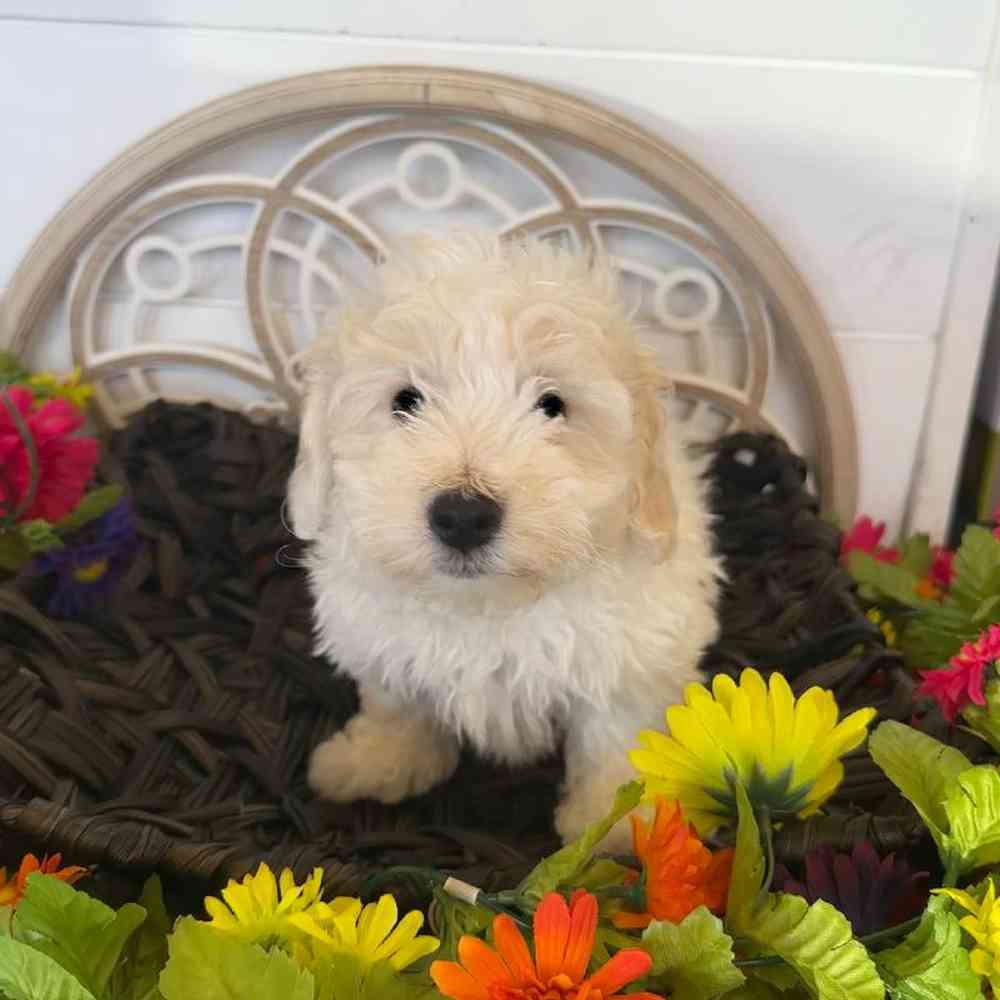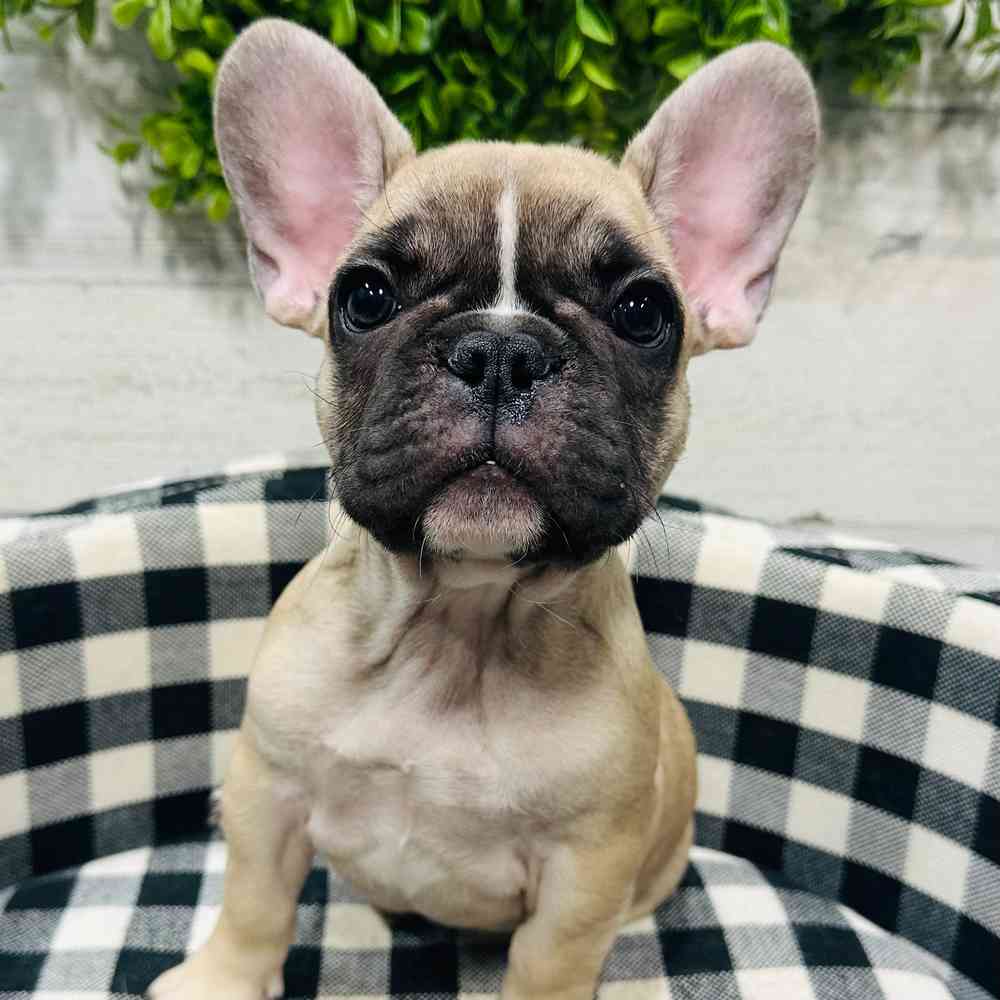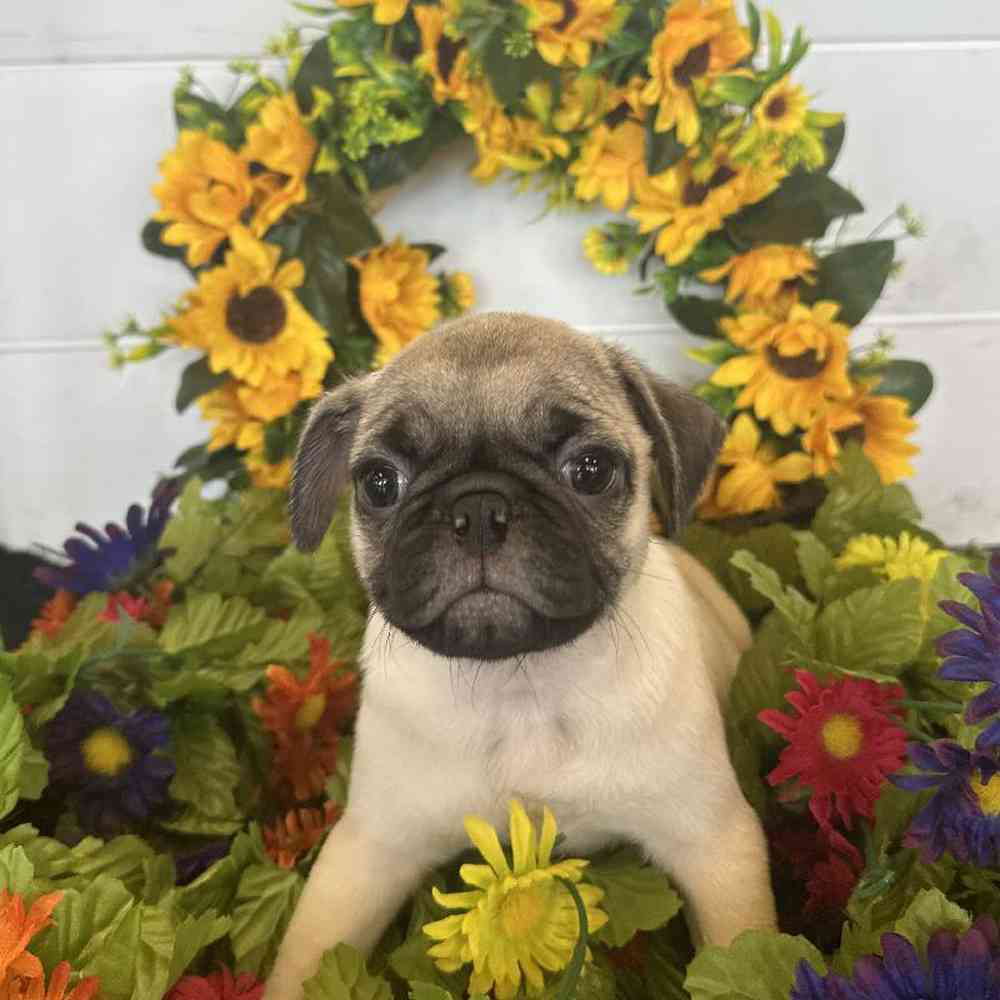
Guard Dog
Apartment Friendly
AKC Registrable
Family Dog
English Bulldog
Kind but courageous, friendly but dignified, the Bulldog is a thick-set, low-slung, well-muscled bruiser whose “sourmug” face is the universal symbol of courage and tenacity. These docile, loyal companions adapt well to town or country.
Available Pups
Puppy Knowledge
Breed Info
Clubs, Registries & Associations
American Canine Association Continental Kennel Club Universal Kennel Club International American Kennel Club United All Breed Registry America's Pet Registry, Inc. United Kennel Club (Based on breed recognition. See store for details on this particular puppy.)
Group
Non-Sporting
Heritage
During the 17th century, the bulldog was used for gambling sport known as bullbaiting, as well as being used to capture wild bulls by coming from under the bull, grasping the bull by the nose and holding on until a rope was put around the bull’s neck. This bulldog was intense and gutsy, and tenacious enough to be insensitive to pain. The Cruelty To Animals Act was enacted in 1835, ending these horrific functions for the bulldog. Breeding was then designed to eliminate the aggressive and fighting behaviors from the bulldog, and in time this dog was cross bred with a Pug resulting in a shorter and wider dog with a brachycephalic (broad and short) skull. This is not the bulldog of old and today’s English Bulldog looks very different with a greatly changed temperament resulting in today’s docile and playful pup.
Description
Medium, 14-17” at the shoulders, weighing anywhere from 40-50 pounds. Their flat coat is short and smooth in colors of solid red, fawn, fallow, piebald, white, red brindle, pale red or a combination of these colors. A lot of strength in a relatively compact body, they are rock-hard muscular with a short muzzle (brachycephalic) and massive jaws with an under bite.
Health Awareness
The English Bulldog has a life expectancy of 8-10 years. This breed is also prone to bloat, patellar luxation, joint problems, and skin conditions. With a brachydephalic skull, be cautious with heat stroke. English Bulldogs are very sensitive to hot or cold temperatures, including in the house. Because of breathing and whelping complications, breeders insist on cesarean delivery.
Personality
The English Bulldog is a clown and quite playful. They look formidable, but they are quite gentle and loving. They love people and are good with children. However, this breed is also strong-willed and determined. You must use humane leadership with the English Bulldog or they will assert their own leadership. It is rumored they are slow to learn, but more appropriately they do not like coercive training. However, they do respond very eagerly to working with you and positive reinforcement, especially clicker training. They are highly intelligent, great problem solvers, and willing to learn. They snore, drool, are messy eaters, but are fun friends.
Exercise/Energy Level
They like to lounge, but also need a daily walk. More active when young, they even run short sprints across the yard. Check with your veterinarian before exercising your English Bulldog in even moderately hot weather. Learn the signs of heat stroke because this breed overheats easily and has a very difficult time cooling off.
Additional Information
Grooming Requirements: Coat is short, smooth and flat requiring weekly brushing and occasional bathing. Wipe this breed's face daily with warm water to keep the skin folds clean. Coat: Short Shedding: Average shedding Hypoallergenic: No, due to shedding Apartment Living: Definitely suitable for apartment living. Lap Dog: Yes Good With Children: Good with all children. Good With Other Pets: Generally good with other pets.
Breed Standard
General Appearance
The perfect Bulldog must be of medium size and smooth coat; with heavy, thick-set, low-swung body, massive short-faced head, wide shoulders and sturdy limbs. The general appearance and attitude should suggest great stability, vigor and strength. The disposition should be equable and kind, resolute and courageous (not vicious or aggressive), and demeanor should be pacific and dignified. These attributes should be countenanced by the expression and behavior.
Size, Proportion, Substance
Size--The size for mature dogs is about 50 pounds; for mature bitches about 40 pounds. Proportion--The circumference of the skull in front of the ears should measure at least the height of the dog at the shoulders. Symmetry--The "points" should be well distributed and bear good relation one to the other, no feature being in such prominence from either excess or lack of quality that the animal appears deformed or ill-proportioned. Influence of Sex In comparison of specimens of different sex, due allowance should be made in favor of the bitches, which do not bear the characteristics of the breed to the same degree of perfection and grandeur as do the dogs.
Head
Eyes and Eyelids--The eyes, seen from the front, should be situated low down in the skull, as far from the ears as possible, and their corners should be in a straight line at right angles with the stop. They should be quite in front of the head, as wide apart as possible, provided their outer corners are within the outline of the cheeks when viewed from the front. They should be quite round in form, of moderate size, neither sunken nor bulging, and in color should be very dark. The lids should cover the white of the eyeball, when the dog is looking directly forward, and the lid should show no "haw." Ears--The ears should be set high in the head, the front inner edge of each ear joining the outline of the skull at the top back corner of skull, so as to place them as wide apart, and as high, and as far from the eyes as possible. In size they should be small and thin. The shape termed "rose ear" is the most desirable. The rose ear folds inward at its back lower edge, the upper front edge curving over, outward and backward, showing part of the inside of the burr. (The ears should not be carried erect or prick-eared or buttoned and should never be cropped.) Skull--The skull should be very large, and in circumference, in front of the ears, should measure at least the height of the dog at the shoulders. Viewed from the front, it should appear very high from the corner of the lower jaw to the apex of the skull, and also very broad and square. Viewed at the side, the head should appear very high, and very short from the point of the nose to occiput. The forehead should be flat (not rounded or domed), neither too prominent nor overhanging the face. Cheeks--The cheeks should be well rounded, protruding sideways and outward beyond the eyes. Stop--The temples or frontal bones should be very well defined, broad, square and high, causing a hollow or groove between the eyes. This indentation, or stop, should be both broad and deep and extend up the middle of the forehead, dividing the head vertically, being traceable to the top of the skull. Face and Muzzle--The face, measured from the front of the cheekbone to the tip of the nose, should be extremely short, the muzzle being very short, broad, turned upward and very deep from the corner of the eye to the corner of the mouth. Nose--The nose should be large, broad and black, its tip set back deeply between the eyes. The distance from bottom of stop, between the eyes, to the tip of nose should be as short as possible and not exceed the length from the tip of nose to the edge of underlip. The nostrils should be wide, large and black, with a well-defined line between them. Any nose other than black is objectionable and a brown or liver-colored nose shall disqualify. Lips--The chops or "flews" should be thick, broad, pendant and very deep, completely overhanging the lower jaw at each side. They join the underlip in front and almost or quite cover the teeth, which should be scarcely noticeable when the mouth is closed. Bite--Jaws--The jaws should be massive, very broad, square and "undershot," the lower jaw projecting considerably in front of the upper jaw and turning up. Teeth The teeth should be large and strong, with the canine teeth or tusks wide apart, and the six small teeth in front, between the canines, in an even, level row.
Neck, Topline, Body
Neck -- The neck should be short, very thick, deep and strong and well arched at the back. Topline -- There should be a slight fall in the back, close behind the shoulders (its lowest part), whence the spine should rise to the loins (the top of which should be higher than the top of the shoulders), thence curving again more suddenly to the tail, forming an arch (a very distinctive feature of the breed), termed "roach back" or, more correctly, "wheel-back." Body--The brisket and body should be very capacious, with full sides, well-rounded ribs and very deep from the shoulders down to its lowest part, where it joins the chest. It should be well let down between the shoulders and forelegs, giving the dog a broad, low, short-legged appearance. Chest--The chest should be very broad, deep and full. Underline--The body should be well ribbed up behind with the belly tucked up and not rotund. Back and Loin--The back should be short and strong, very broad at the shoulders and comparatively narrow at the loins. Tail--The tail may be either straight or "screwed" (but never curved or curly), and in any case must be short, hung low, with decided downward carriage, thick root and fine tip. If straight, the tail should be cylindrical and of uniform taper. If "screwed," the bends or kinks should be well defined, and they may be abrupt and even knotty, but no portion of the member should be elevated above the base or root.
Forequarters
Shoulders--The shoulders should be muscular, very heavy, widespread and slanting outward, giving stability and great power. Forelegs--The forelegs should be short, very stout, straight and muscular, set wide apart, with well developed calves, presenting a bowed outline, but the bones of the legs should not be curved or bandy, nor the feet brought too close together. Elbows--The elbows should be low and stand well out and loose from the body. Feet-- The feet should be moderate in size, compact and firmly set. Toes compact, well split up, with high knuckles and very short stubby nails. The front feet may be straight or slightly out-turned.
Hindquarters
Legs--The hind legs should be strong and muscular and longer than the forelegs, so as to elevate the loins above the shoulders. Hocks should be slightly bent and well let down, so as to give length and strength from the loins to hock. The lower leg should be short, straight and strong, with the stifles turned slightly outward and away from the body. The hocks are thereby made to approach each other, and the hind feet to turn outward. Feet--The feet should be moderate in size, compact and firmly set. Toes compact, well split up, with high knuckles and short stubby nails. The hind feet should be pointed well outward.
Coat
Coat--The coat should be straight, short, flat, close, of fine texture, smooth and glossy. (No fringe, feather or curl.) Skin--The skin should be soft and loose, especially at the head, neck and shoulders. Wrinkles and Dewlap--The head and face should be covered with heavy wrinkles, and at the throat, from jaw to chest, there should be two loose pendulous folds, forming the dewlap.
Color
The color of coat should be uniform, pure of its kind and brilliant. The various colors found in the breed are to be preferred in the following order: (1) red brindle, (2) all other brindles, (3) solid white, (4) solid red, fawn or fallow, (5) piebald, (6) inferior qualities of all the foregoing. Note: A perfect piebald is preferable to a muddy brindle or defective solid color. Solid black is very undesirable, but not so objectionable if occurring to a moderate degree in piebald patches. The brindles to be perfect should have a fine, even and equal distribution of the composite colors. In brindles and solid colors a small white patch on the chest is not considered detrimental. In piebalds the color patches should be well defined, of pure color and symmetrically distributed.
Gait
The style and carriage are peculiar, his gait being a loose-jointed, shuffling, sidewise motion, giving the characteristic "roll." The action must, however, be unrestrained, free and vigorous.
Temperament
Friendly, Courageous, Calm
Disqualifications
Brown or liver-colored nose.
Trivia
Did you know?
The official mascot of the United States Marine Corps 39 universities in the United States use the English Bulldog as their mascot. President Warren Harding (term 1921-1923) had an English Bulldog named Oh Boy.









